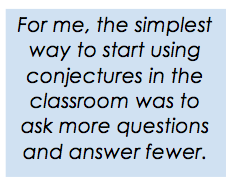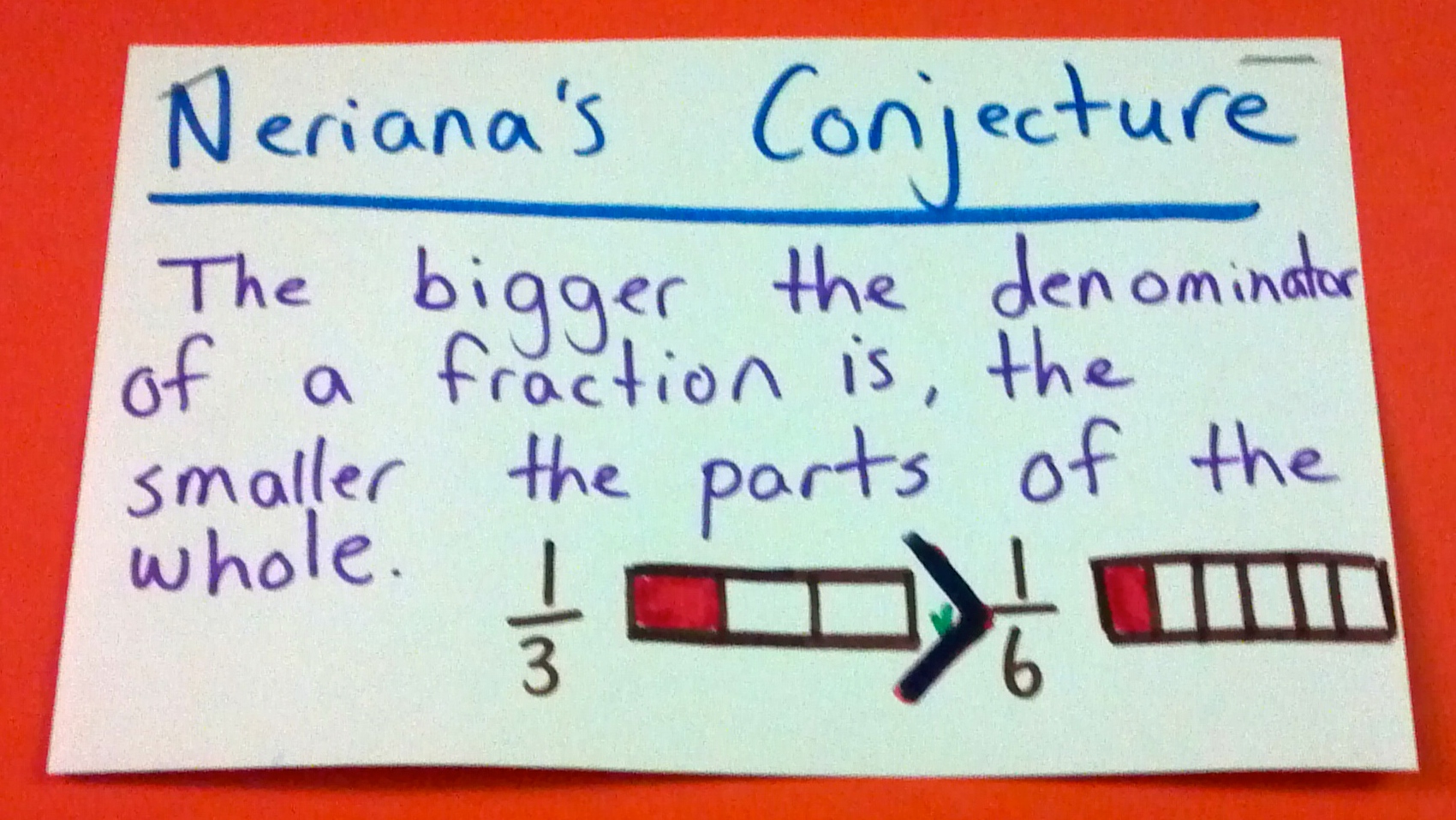This post is from our colleague and friend William Deadwyler, a 6th grade math teacher and strings enthusiast who works at MS 22 (South Bronx).
______________________________________________________________________________________________________________________________________
This summer I met Sylvia Glauster, a 5th Grade teacher at The Ancona School in Chicago. Sylvia led a summer institute for 5th – 8th grade teachers at Math in the City on geometry, based on a new unit she co-wrote The Architects’ Project. My work with Sylvia inspired me to start gathering and publishing students’ conjectures. Outside of my classroom is a bulletin board where conjectures are published. Some of the conjectures are right, some are wrong. All were generated in class, based on investigations and number strings that we discussed together. Investigating these conjectures will help students develop the curiosity and persistence that all successful mathematicians share.
Here are a few examples:
Conjectures play an important role in my teaching because I believe, fundamentally, that math class needs a makeover. The work students do in math class often has little to do with what people actually do in the real world. Our job as math teachers is to make math as realistic and meaningful as possible. We need to stop treating our students like test takers and start treating them like young mathematicians.
But, what exactly does that mean? For one, I now believe that real life mathematicians work within a community. They create ideas about how mathematics works and share these ideas with their peers. These formalized ideas are called conjectures. Professional mathematicians use conjectures to describe the patterns they see in the world around them. This curiosity is at the heart of what “real math” is all about.
Students need to be exposed to this process at a very young age. Supporting mathematical learning through the use of conjectures will help form students who are curious about mathematics, rather than kids lookin g for the shortest way to get the answer. Nurturing this type of critical thinking will better prepare our children for a 21st century world where non-routine, creative, flexible thinkers will prevail. To you and me, these conjectures might seem obvious or simple, but to many kids these ideas are big and important and “in development.” Naming the conjecture after the student who originated it is one important way to validate their ideas and let them know that they matter in my class.
g for the shortest way to get the answer. Nurturing this type of critical thinking will better prepare our children for a 21st century world where non-routine, creative, flexible thinkers will prevail. To you and me, these conjectures might seem obvious or simple, but to many kids these ideas are big and important and “in development.” Naming the conjecture after the student who originated it is one important way to validate their ideas and let them know that they matter in my class.
For me, the simplest way to start using conjectures in the classroom was to ask more questions and answer fewer. When a student asks a really good question, I now “pivot” it to the class and let my students wrestle with it, creating their own ideas. Some will be right, others will be wrong, but either way students are learning.
So, if conjectures are not alive in your room, or if it hadn’t occurred to you that your students have conjectures worth exploring, I invite you to make use of them. Your students are more capable than you know. Inspire them to think for themselves and then get out of their way. The results will speak for themselves.





this is fabulous. could you post some examples of incorrect conjectures and talk a bit about coming back to all conjectures. do you eventually prove or disprove all of them?
Debbie, thanks for your response. We’ve invited Will to write a follow-up post — based on your questions — which will be up soon.